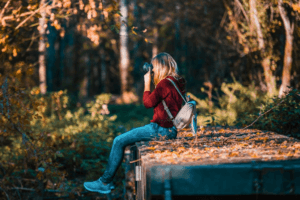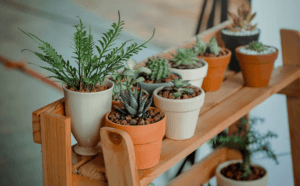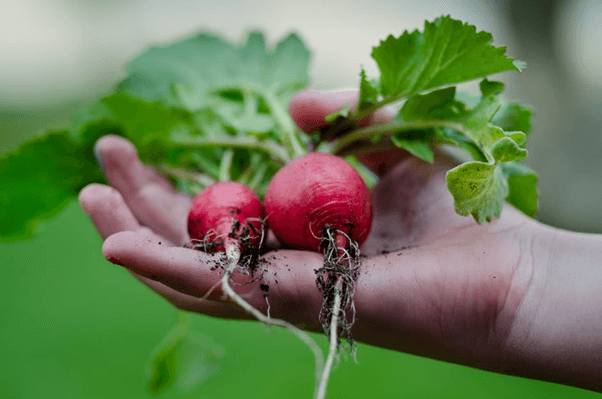Blog
Nature and Mental Wellbeing – Part 3: How to get Involved?
Welcome back,
Last week we spent a bit of time thinking about what an increased connection with nature looks like in the literature and what ecotherapy is. We also thought about what the evidence-base says (which is pretty positive!). In this blog I’m going to think about how we all can get more involved in this kind of activity ourselves.
Things we can all try
So, the evidence fairly confidently suggests that getting more in touch with nature and also getting out an about more in it is pretty good for us. So, what next?
There are so many things that we can do, and I should imagine there are probably lots of things that you might already do now, have done in the past or might like to do in the future. That said, I thought I would put some lists together that might provide a little spark of inspiration for you to try!
Getting active outdoors
Building connections with the natural world
Using your mindfulness skills with nature
Nature indoors
Growing and picking food
Helping the environment
Just a quick note to stay safe!! Make sure you do the necessary research, let people know where you are, don’t eat anything if you’re not totally sure what it is etc before trying something new. There are loads of online guides on staying safe when going outdoors that you can access once you identify what you’re going to do.
Also, please do remember doing this doesn’t have to be complicated, difficult or stressful. Keep in mind the things you like, or might like, to do! It can be really fun to involve others so if you have friends, family or work colleagues who might be keen, get them involved too! I’ve put a load of links at the bottom of the page for some additional resources. See what you think.

1. Getting active outdoors
Join a local group like a walking, running or rambling group
Dust off the bike and go for a cycle
Walk on the beach
Try a new ‘outdoorsy’ activity… maybe surfing, rock climbing, hiking, bird watching, canoeing or wild swimming.
Go for a swim in an outdoor pool
If you take a class, try and find an outdoor version. There are often running, yoga, Tai Chi and many other groups and classes happening in parks and open spaces
Take a walk in green space or park
Find a woodland or nature trail and walk it
Go for a walk around the block in your lunch break; get work mates involved too
Eat you lunch or other meals outdoors – perhaps involve other people too
Try out geocaching – finding hidden items in outdoor locations
Helping on a street or beach clean
Get a guide and try out foraging for wild food
2. Building connections with the natural world
Doing some gardening
Go stargazing – Just get out there and look at the stars! Or if you’re really keen get a book or an app to start identifying stars. I like one called ‘Star Map’
When you’re aware of nature around you (looking out the window or being in the park) notice what wildlife is around…what insects, birds, fish or other little critters can you see?
Go rock pooling
Visit a local garden
Visit a local community farm or set of allotments
Put a bird feeder or box up or a ‘bug hotel’
Try bird watching at your local park or reserve
Go in a hot air balloon
Sit in the garden
Start taking some pictures of the outdoors. Smart phones have great cameras!
Go beach combing
Try walking your dog in a different outside space and notice the difference
If you don’t have a dog to walk there are dog walking programs where you can ‘borrow’ dogs or you can help out at your local animal shelter
 3. Using your mindfulness skills with nature
3. Using your mindfulness skills with nature
Nothing complicated here! Just be mindful in nature. If you’re new to mindfulness we have a blog to get you started here.
Find things to see, hear, taste, smell and touch
Get creative! Leaves, stones, seeds, fruit, feathers, running water, trees in the wind, grass under your feet, sand between your toes, the sound of rain, the feeling of sunlight on your skin, clouds in the sky, the smell of a potted flower, the feeling on the wind, the feeling of a pets fur, birds sounds, the smell of cut grass….
You could also try practicing or listening to other mindfulness exercises you might use normally but outside or around nature. Notice the different experiences you might have in doing it.
You can also try this inside! Look out the window at trees, clouds, flowers or animals or feel the warmth of the sun. Use objects like leaves, fruit, seeds, feathers and alike for practices.
 4. Nature indoors
4. Nature indoors
Get arty! Use natural materials to paint or create art projects for your home! Think leaves, vegetables, feathers, flowers, seeds…
Find a place inside your home where you can increase your connection with nature or the outside world. Look out the window, get some pot plants or flowers, time with your pets.
Take pictures of your favourite parts of nature or look at pictures in books or the internet.
Grow plants, herbs or flowers inside or in window boxes.
Watch a nature documentary – Anything with David Attenborough should be good!
Listen to ‘natural’ music or sounds. It’s not all whale music… you can get great recordings of bird song, ocean waves, rainfall or forest sound.
Set you backgrounds as something natural that you like! Phones, computers tablets… change it up!
Find a nature webcam, watch something amazing! Peregrine falcons hatching or badgers finding food!
5. Growing and picking food
Get growing something edible – from seeds or plugs.
Make some space for growing vegetables, salad, fruit or herbs in your garden.
If you don’t have a garden you can still grow things to eat. Think window boxes, hanging baskets, planet pots or pots in a window sill.
‘Carry on gardening’ is a lovely project helping people of all abilities and knowledge levels to get growing
Go fruit picking!
Grow food with other people. You can join clubs, communities, growing projects or allotment societies.
Learn about foraging for wild food. This can be done in urban or rural places. For more details, the woodland Trust has a great webpage on it (see below)! As noted above, not all plants are safe. Please make sure you know what something is before you try it

6. Helping the environment
Pick up litter in your local park or help out on a beach clean up
Put up a bird feeder or make an insect box
Set up a water butt to use instead of a hose
Ride your bike or walk to work or the shop instead of getting in the car
Set up a compost bin or wormery
Make an habitat – for example a pond for frogs and newts, a hedgehog house or a meadow area for wild flowers
Grow some plants that are helpful for the environment and are good for animals such as birds or bees
Get involved in a project – more about this next time!
What to do???
Looking at these lists I wonder if there is anything on there that you might consider giving a try? Or perhaps there is something else you have been considering that’s not on there? Perhaps you’d like to make a list of things you might like to do more of? Think small and manageable, get creative and get them in the diary!
Next time…
Next week I’ll think about some projects that are running at the moment and also how we might overcome some of the barriers to getting involved.
I hope you enjoyed this one. If you feel worried about any of the information here, you can have a look at our resources page for contacts which might be helpful.
See you next week for the next instalment.
Pete
Useful Websites to get you started:
- http://gardeningmentor.com/plant-vegetable-garden/
Rockpooling – http://www.nationaltrust.org.uk/features/rockpooling-guide-for-families
Growing food- http://www.bbc.co.uk/gardening/digin/
Carry on gardening – http://www.carryongardening.org.uk/
National Allotment Society – http://www.nsalg.org.uk/
Wild food and foraging – http://www.woodlandtrust.org.uk/visiting-woods/things-to-do/foraging/
Beach cleans – http://www.sas.org.uk/our-work/beach-cleans/
Making a bug box – http://www.rspb.org.uk/birds-and-wildlife/advice/gardening-for-wildlife/insects-and-minibeasts/
Feeding birds – http://www.rspb.org.uk/birds-and-wildlife/advice/how-you-can-help-birds/feeding-birds/
Hedgehog Houses – http://britishhedgehogs.org.uk/leaflets/L5-Hedgehog-Homes.pdf
Planting for bees – http://thehoneybeeconservancy.org/plant-a-bee-garden/
